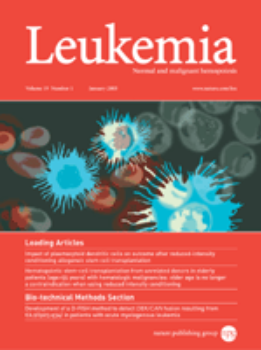Heart failure in patients with acute myeloid leukemia (AML) treated with anthracycline agents during remission induction therapy: a systematic review and meta-analysis.
IF 13.4
1区 医学
Q1 HEMATOLOGY
引用次数: 0
Abstract
Patients with acute myeloid leukemia (AML) are at increased risk of cardiovascular disease, particularly heart failure. Anthracyclines are integral to remission induction therapy in patients eligible for intensive treatment and well-known for their association with cardiotoxicity. However, the incidence of heart failure and other cardiovascular adverse events (CVAEs), as well as differences across various anthracycline agents, has not been comprehensively assessed. We systematically searched PubMed and EMBASE for studies conducted in AML patients treated with anthracyclines during remission induction. Forty-one studies (5995 patients), primarily clinical trials, published between February 1991 and March 2024 were included. The pooled proportion of heart failure was 3.2% (95% CI 1.0-6.2) overall and 2.3% (95% CI 1.4-3.3), 5.0% (95% CI 0.3-14.1) and 10.2% (95% CI 2.4-21.7) for patients treated with daunorubicin, idarubicin or mitoxantrone respectively. Cardiac function was infrequently monitored, and CVAE reporting was generally poor. Since current adverse event grading systems primarily rely on clinical symptoms to assign severity, significant asymptomatic declines in cardiac function will remain undetected. Enhanced CVAE monitoring and reporting, along with revisions to established grading systems, is needed to better identify subclinical cardiotoxicity in AML patients, enabling timely intervention to prevent progression to more advanced heart failure stages.急性髓系白血病(AML)患者在缓解诱导治疗期间接受蒽环类药物治疗的心力衰竭:一项系统回顾和荟萃分析。
急性髓性白血病(AML)患者患心血管疾病的风险增加,尤其是心力衰竭。蒽环类药物是有资格接受强化治疗的患者缓解诱导治疗不可或缺的一部分,并因其与心脏毒性相关而闻名。然而,心衰和其他心血管不良事件(CVAEs)的发生率以及各种蒽环类药物之间的差异尚未得到全面评估。我们系统地检索了PubMed和EMBASE中在诱导缓解期间接受蒽环类药物治疗的AML患者中进行的研究。纳入1991年2月至2024年3月期间发表的41项研究(5995名患者),主要是临床试验。总的来说,心力衰竭的合并比例为3.2% (95% CI 1.0-6.2),而接受柔红霉素、依甲红霉素或米托沙酮治疗的患者心力衰竭的合并比例分别为2.3% (95% CI 1.4-3.3)、5.0% (95% CI 0.3-14.1)和10.2% (95% CI 2.4-21.7)。很少监测心功能,CVAE报告普遍较差。由于目前的不良事件分级系统主要依赖于临床症状来分配严重程度,因此心功能的显著无症状下降仍未被发现。需要加强CVAE监测和报告,同时修订现有的分级系统,以更好地识别AML患者的亚临床心脏毒性,使及时干预能够防止进展到更晚期的心力衰竭阶段。
本文章由计算机程序翻译,如有差异,请以英文原文为准。
求助全文
约1分钟内获得全文
求助全文
来源期刊

Leukemia
医学-血液学
CiteScore
18.10
自引率
3.50%
发文量
270
审稿时长
3-6 weeks
期刊介绍:
Title: Leukemia
Journal Overview:
Publishes high-quality, peer-reviewed research
Covers all aspects of research and treatment of leukemia and allied diseases
Includes studies of normal hemopoiesis due to comparative relevance
Topics of Interest:
Oncogenes
Growth factors
Stem cells
Leukemia genomics
Cell cycle
Signal transduction
Molecular targets for therapy
And more
Content Types:
Original research articles
Reviews
Letters
Correspondence
Comments elaborating on significant advances and covering topical issues
 求助内容:
求助内容: 应助结果提醒方式:
应助结果提醒方式:


